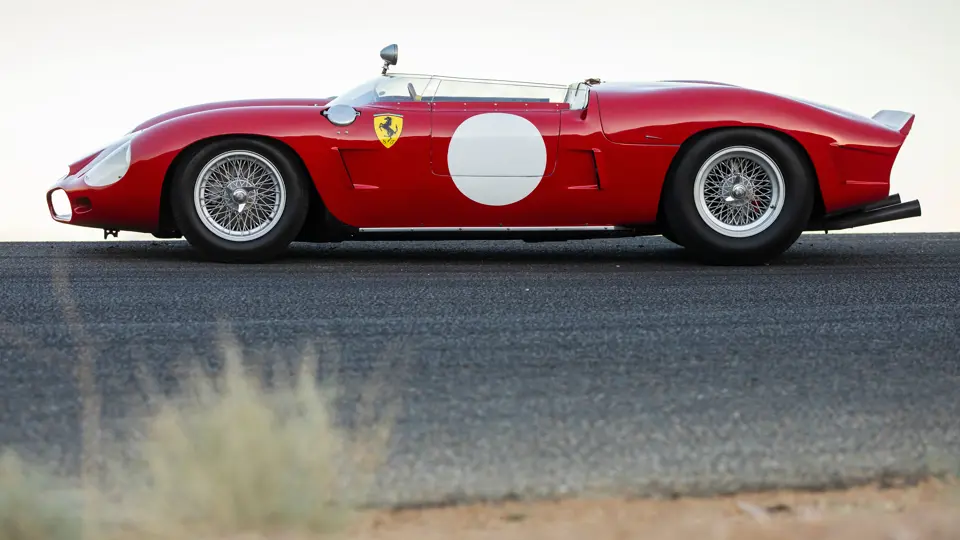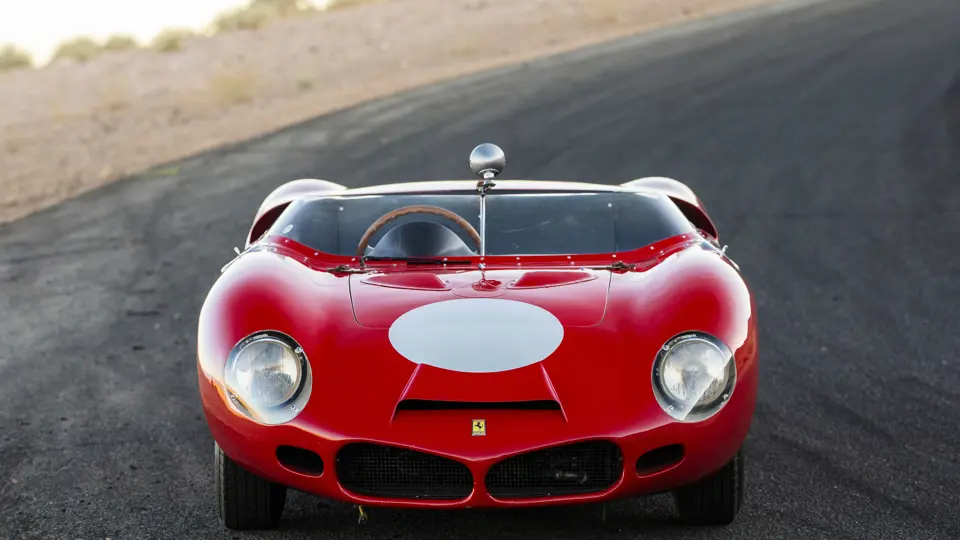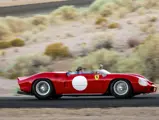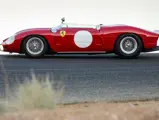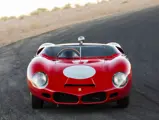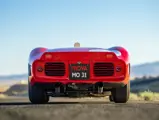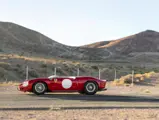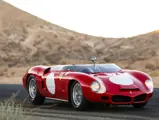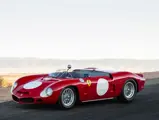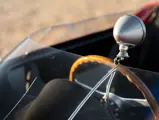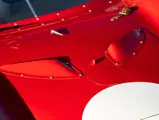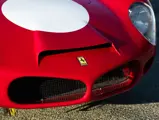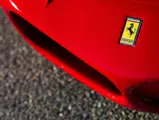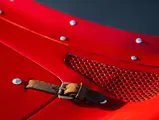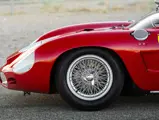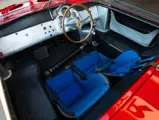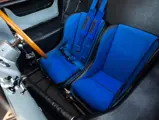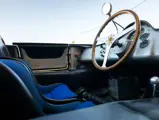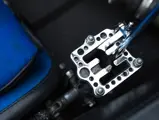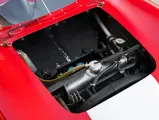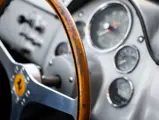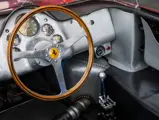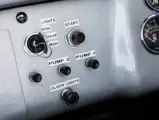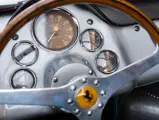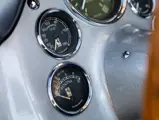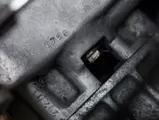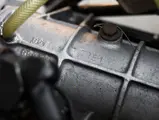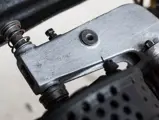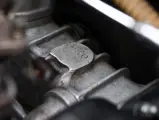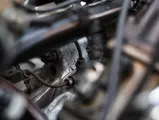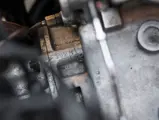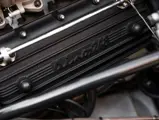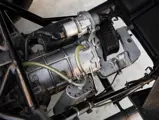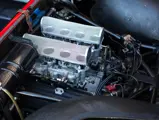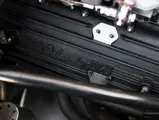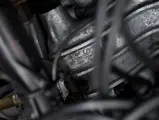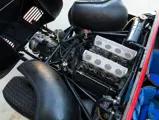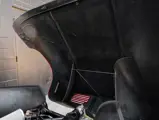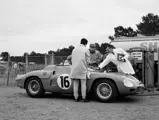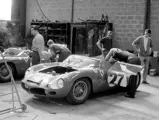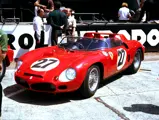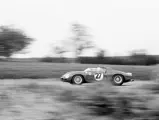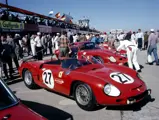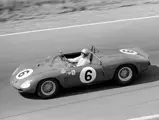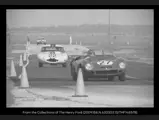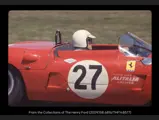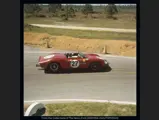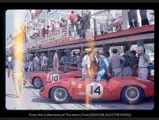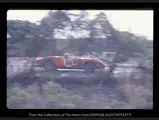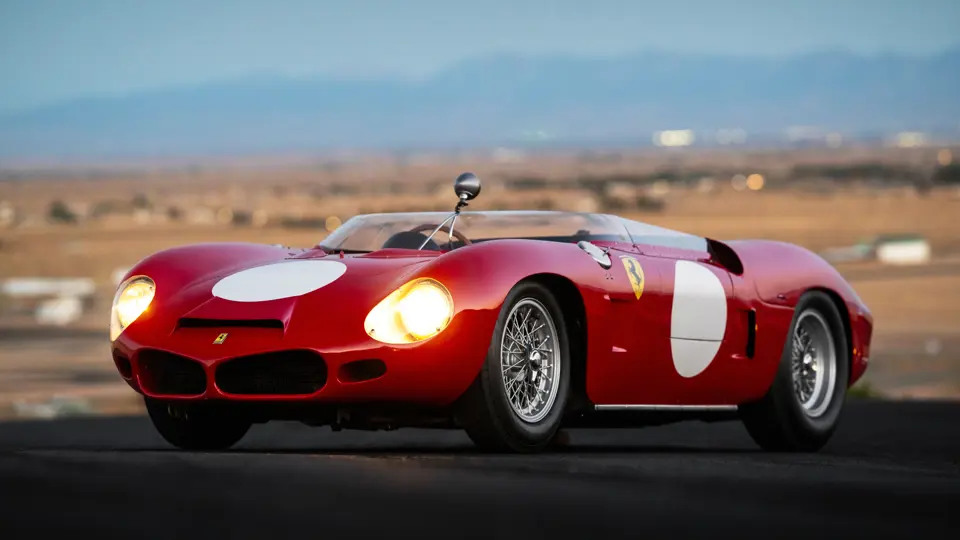
1962 Ferrari 268 SP by Fantuzzi
{{lr.item.text}}
$7,705,000 USD | Sold
{{bidding.lot.reserveStatusFormatted}}
- Scuderia Ferrari Works entry for the 1962 24 Hours of Le Mans
- Factory racing and development car for mid-engine V-8 configuration that became integral to the evolution of the Ferrari P-car series
- The only original example remaining, of the six produced, fitted with the larger 8-cylinder engine and the oldest surviving V-8 Ferrari sports racer in the world
- Ferrari Classiche Certified with the original Fantuzzi “shark-nose” body configuration; matching-numbers throughout
- Campaigned under the NART banner from late-1962 through 1963
- Driven to the 1964 SCCA Class D Modified Championship
- Formally of Pierre Bardinon’s renowned Mas du Clos Collection for 27 years
- Only two private owners since 1969
- Previously exhibited at the Galleria Ferrari in Maranello, Italy
EVOLUTION OF THE FERRARI SPORTS PROTOTYPE
In 1960, following the lead taken by Cooper and Lotus, Ferrari began to experiment with rear engine placement in its Formula 1 and sports-racing cars. The dual overhead-cam V-6 engine co-engineered by Vittorio Jano and credited to the late Dino Ferrari was the power plant of choice, and potential applications ranged from Grand Prix to sports car racing.
With displacement increased to 2.4 liters, the engine was dropped into two new sports cars, chassis numbers 0790 and 0796, which rode purpose-built Type 561 chassis based on the 156 F1 Grand Prix car. The two cars were introduced to the public at Ferrari’s press conference in February 1961, marking the first appearance of the mighty Dino SP sports prototypes.
The most dramatic aspect of the SP was surely its breathtaking spider coachwork by Fantuzzi. A complete departure from prior Maranello styling, the new open design featured a low-rise windscreen, delicately curved rear fenders, and the innovative sharp spoiler at the edge of the tail. These cues would become instrumental to seminal Ferrari racers like the 250 P and 330 P, and even influenced Scaglietti-built berlinettas like the 250 LM. Fantuzzi’s bodywork was punctuated with an aerodynamic protruding nose featuring a twin-nostril grille, similar to that of the Ferrari 156 Formula 1 driven by Phil Hill in the World Championship in 1961.
While the first two 246 SPs showed significant promise during the 1961 season with a 1st overall finish at the Targa Florio and 3rd place at the Nürburgring 1000 KM, they also suffered their share of early retirements. Encouraged by the promising results, Ferrari developed the SP into a broader range in 1962 debuting four SP examples featuring four different engines.
In addition to the 246’s original 2.4-liter displacement, the line-up now featured smaller and larger versions of the Dino V-6 (respectively the 196 SP and the 286 SP), as well as a brand new, extremely unusual V-8. The so-called 248 SP featured a 2.4-liter engine that was essentially two-thirds of a 400 Superamerica V-12. This motor was initially used on just two cars: the one shown at the press conference, chassis number 0806, and the example presented here, chassis number 0798.
CHASSIS NUMBER 0798
This car is the third of six SP examples built, soon followed by chassis numbers 0802, 0804, and 0806. The 1962 cars featured minor bodywork revisions, as the FIA’s windscreen-height regulation had changed. With a cut windscreen, new technical director Mauro Forghieri correspondingly lowered the tail for an even sleeker profile.
The 2.4-liter V-8 unfortunately proved to be underwhelming in competition, with the best performance coming with a 13th place finish by chassis 0806 at the 12 Hours of Sebring in March 1962. Displacement was therefore increased to 2.6 liters, and just four examples of this new Type 202 engine were reportedly produced, two of which were quickly installed into 0806 and 0798.
Now equipped as a 268 SP, chassis 0798 was integral to Ferrari’s testing at the Le Mans trials in April 1962, where it was put through the paces by team drivers Ricardo Rodriguez, Lorenzo Bandini, Mike Parkes, Olivier Gendebien, and Willy Mairesse. Technically, the car was modified with a rear-cockpit airfoil enclosure for potential aerodynamic improvement along the fast Mulsanne straight, and this may have been the first appearance of the bread-basket cowl enclosure later seen in the 250 P and 330 P. A central dual long-pipe exhaust and special glass-sectioned front window for improved vision were also added. Despite the extensive tuning, 0798 retired early at Le Mans in June, with Giancarlo Baghetti and Ludovico Scarfotti experiencing clutch issues after 230 laps. Later in 1962, the Scuderia sold 0798 to Luigi Chinetti for use by his North American Racing Team (NART).
In December 1962, the 268 SP was entered by NART at the Bahamas Speed Weeks, and it captured 8th overall and 3rd in class at the Nassau Trophy Race, piloted by the great Bandini. Over the next few months, further bodywork alterations were undertaken, with the twin-nostril grille replaced by a single-vent configuration. The car was then entered at Sebring in March 1963, where it was piloted by John “Buck” Fulp and Team Meister Bräuser ace Harry Heuer to a 34th overall finish, and 8th in class. Bandini assumed driving duties again at the Canadian Grand Prix in September, though the car would retire early.
During this period, the Ferrari was sold to Buck Fulp, though he continued to largely campaign the car on behalf of NART. A very successful race record soon shaped up, starting with the 1963 Bahamas Speed Weeks, where the SP finished 5th overall and 2nd in class at the Governor’s Trophy Race, and 11th overall with 2nd in class at the Nassau Trophy Race, both times driven by Fulp.
In January 1964, 0798 was purchased by privateer Tom O’Brien of Patterson, New Jersey, in a partial exchange for chassis number 0776, a front-engine 196 S. O’Brien and his brother Jim raced the 268 SP frequently in East Coast SCCA events, finishing 2nd overall and 1st in class at Marlboro in April 1964, and 1st overall at Cumberland in May. This was followed by another 1st overall finish at Bridgehampton in May, and three strong finishes at Lime Rock, a 5th place in August, 2nd place in October, and another 1st overall one week later. The strength of these performances propelled Tom O’Brien to the 1964 SCCA Class D Modified Championship.
In 1965, O’Brien sold the car to one of his employees, Robert Hutchins of New York. His race record was less successful, with several retirements over the course of 1965 and 1966 that included two engine failures. Luigi Chinetti was retained to rebuild the original motor, and the car was eventually traded back to him in July for a 275 GTB/C competition car.
FROM RUGGED RACER TO RARE COLLECTIBLE
The rare sports prototype remained stored at Chinetti’s Greenwich, Connecticut, facility until February 1969, when it was sold to Pierre Bardinon of Aubusson, France. Mr. Bardinon was one of the world’s foremost Ferrari collectors, owning a personal museum of some of Maranello’s most important sports-racers, housed within his sprawling Mas du Clos estate. Enzo Ferrari himself once told a journalist that he did not need a Ferrari museum because one already existed at his friend’s Mas du Clos collection. Mr. Bardinon returned the SP to Fantuzzi for refurbishment in the early 1970s, and the nose was restored to its original twin-nostril configuration, while the competition exhaust was replaced with the original split-pipe design initially utilized by the factory.
In the summer of 1987, the beautifully restored car was displayed at Cartier’s Homage to Ferrari exhibition outside of Paris, and it was also included in a feature about the Mas du Clos Collection that ran in issue No. 50 of Cavallino magazine. In June 1996, after 27 years in the renowned collection, 0798 was presented at Concorso Italiano in August and acquired by the current owner soon thereafter.
The consignor has continued to present the car at select major events, starting with the Ferrari 50th Anniversary celebration drive from Rome to Modena in early June 1997, followed by the Goodwood Festival of Speed a few weeks later. Other events over the past two decades of ownership include the 1998 Ferrari Days at Spa-Francorchamps, 2002 Goodwood Festival of Speed, Ferrari 60th Anniversary Concours in Maranello, 2001 Silverstone Historic Festival, 2013 St. James Concours d’Elegance, and countless others. In January 2001, the fabulous 268 SP appeared at the Cavallino Classic where it took home a Platinum Award and the Ferrari Spirit Cup.
This 286 SP claims extreme rarity in the Ferrari lineage as one of just six SP racers originally built and one of only two examples originally equipped with the developmental Maranello eight-cylinder engine. Boasting associations with legendary drivers like Lorenzo Bandini, Harry Heuer, Olivier Gendebien, and Ricardo Rodriguez, chassis 0798 was an integral part of Ferrari’s sports prototype development and racing campaign, and it laid the foundational groundwork for the famed Ferrari P cars. It is also no doubt a cornerstone of the 1964 SCCA D Modified Championship. As such, 0798 has been extensively chronicled and photographed in numerous books and articles, including significant coverage in John Godfrey’s authoritative 1990 volume Ferrari Dino SPs as well as a multi-part feature in Cavallino.
Still displaying the benefits of its faithful restoration in the hands of Pierre Bardinon, with a lovely patina, this technically groundbreaking and stylish 268 SP would crown any collection. With Ferrari Classiche Red Book certification and recognition in several displays at Ferrari’s own museums in Maranello and Modena as the oldest surviving V-8 sports racer, chassis number 0798 now awaits its next dedicated caretaker, certain to elicit invitations to major concours d’elegance, FCA events, and preeminent motorsports reunions.
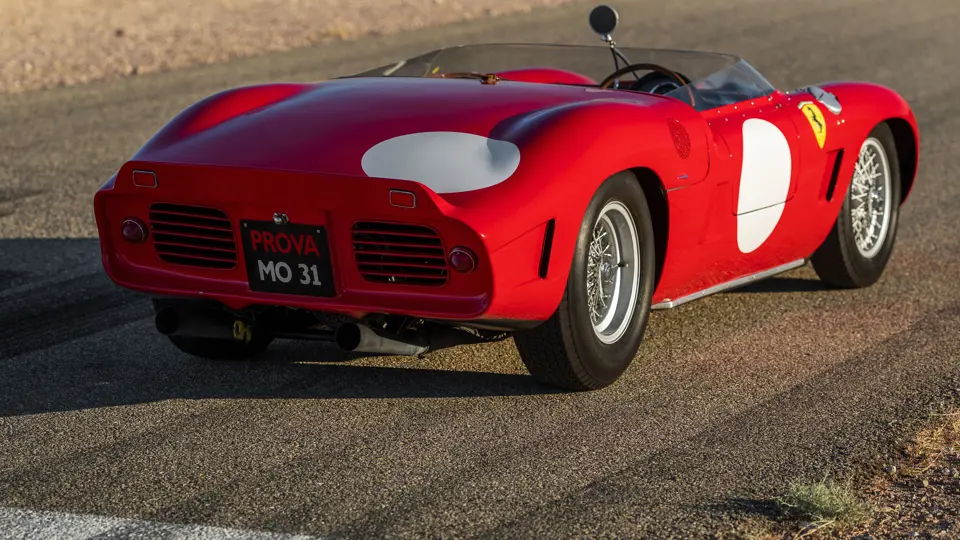



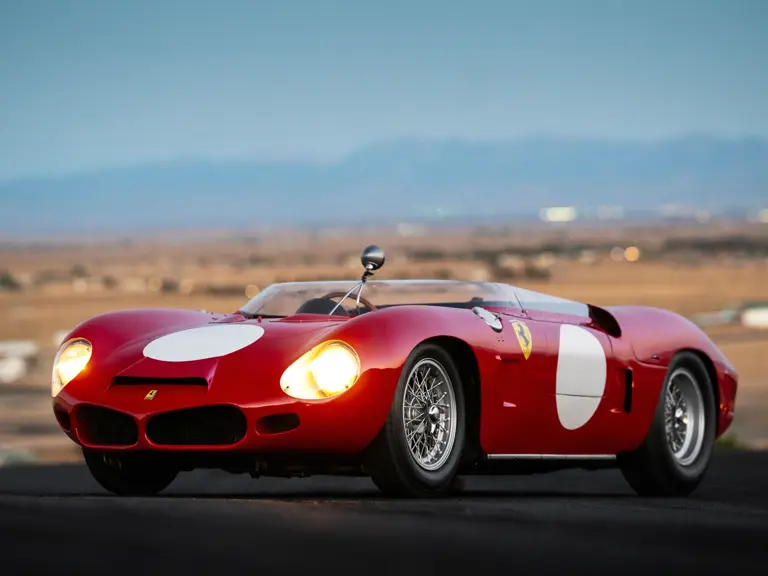
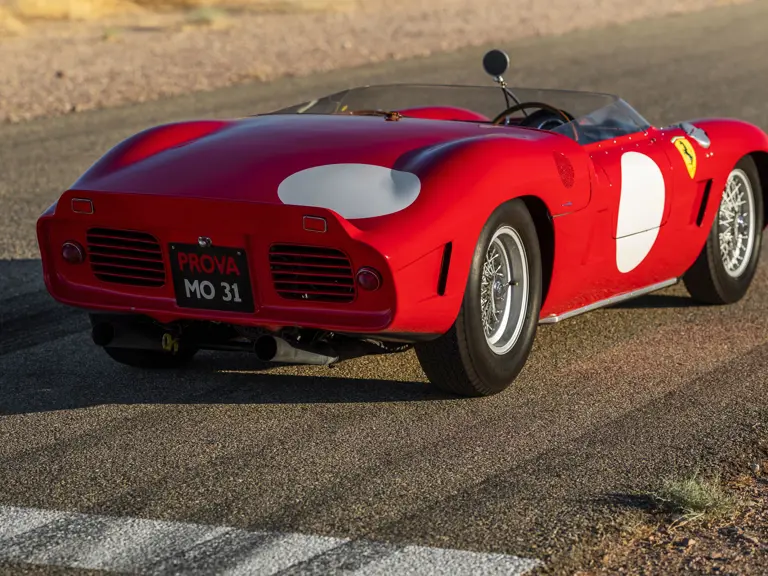
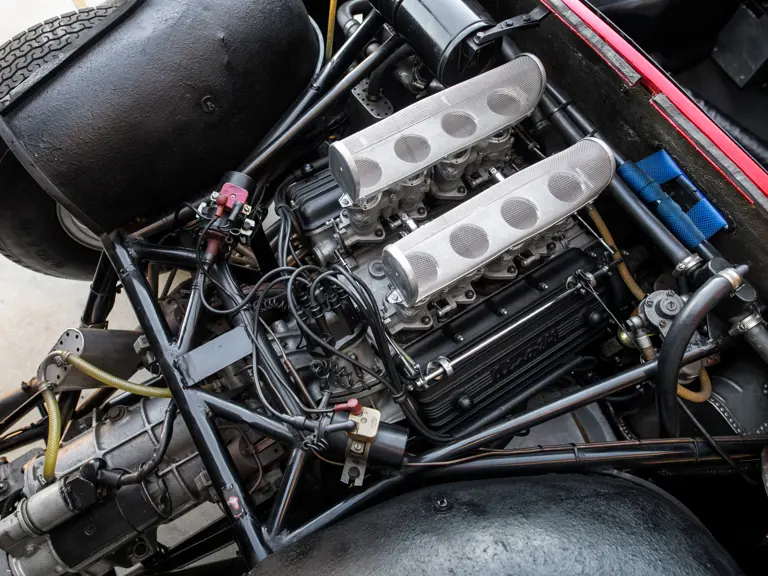
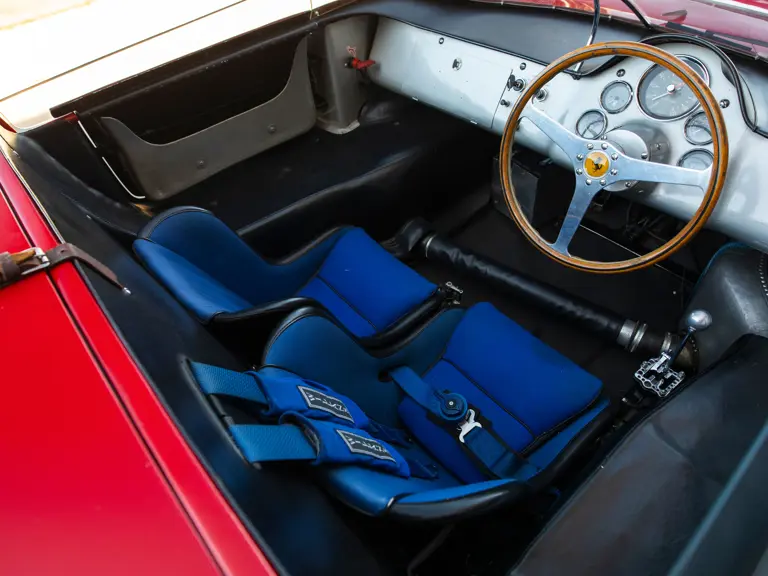
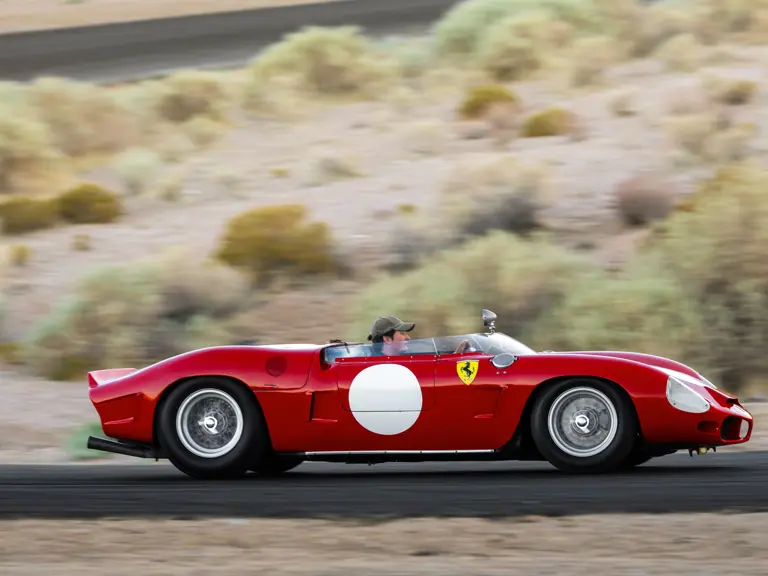
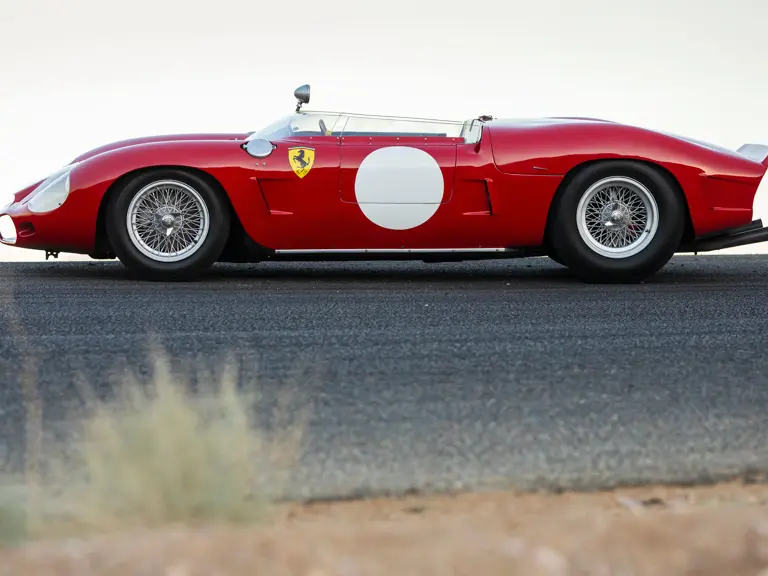
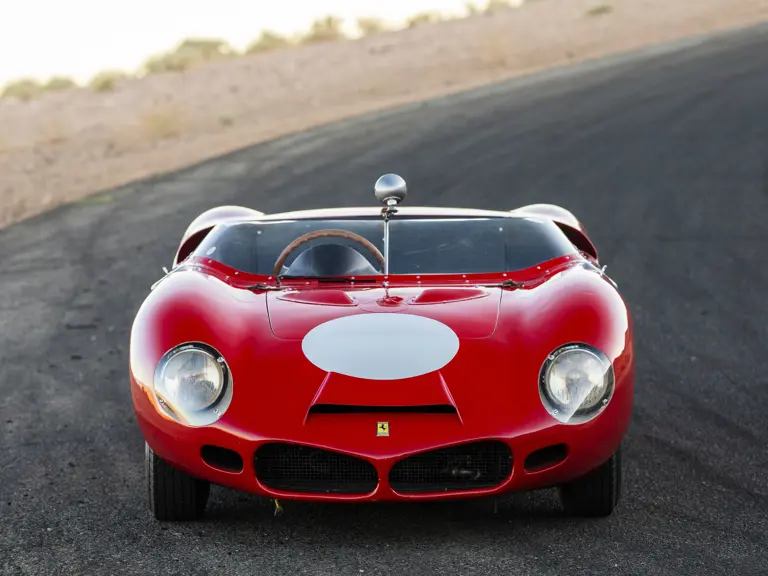
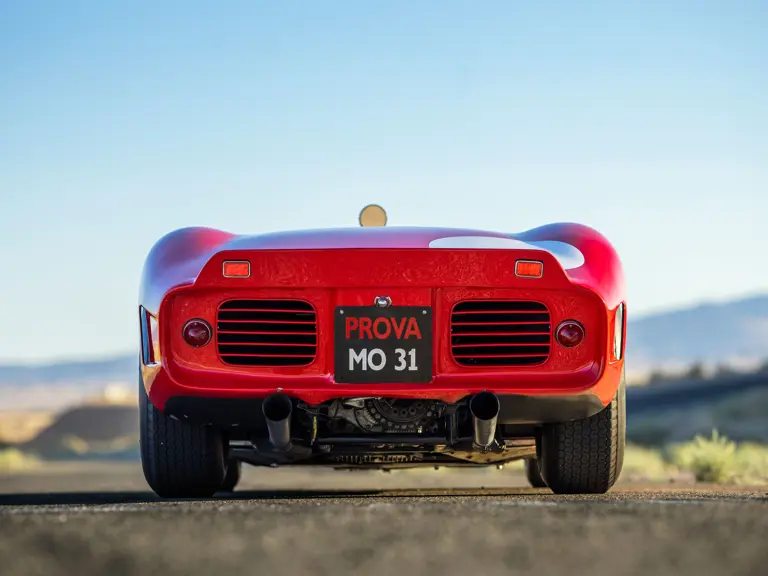
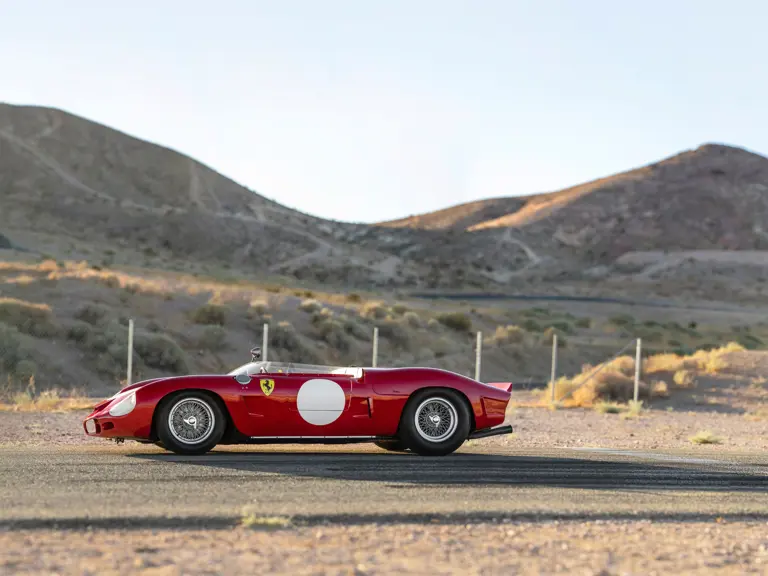
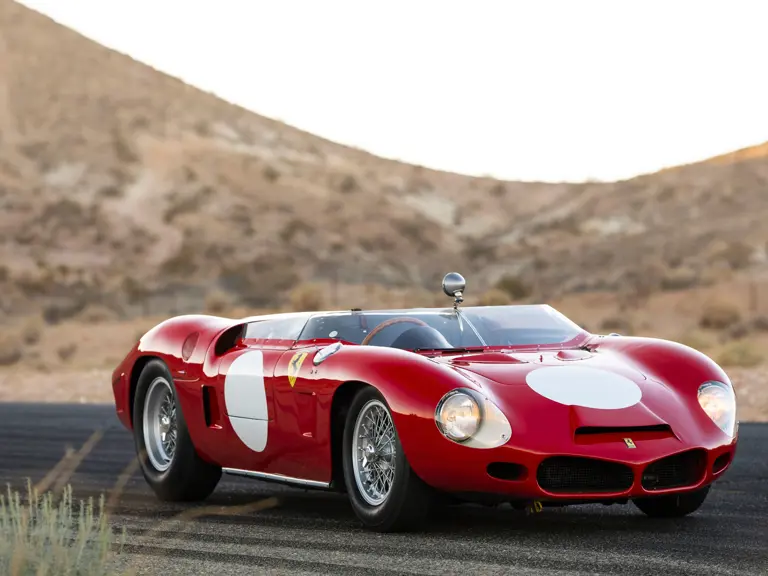
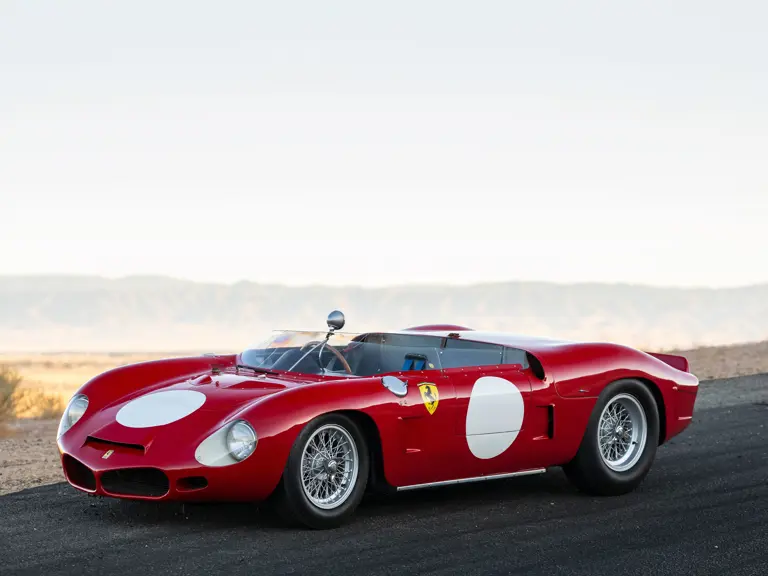
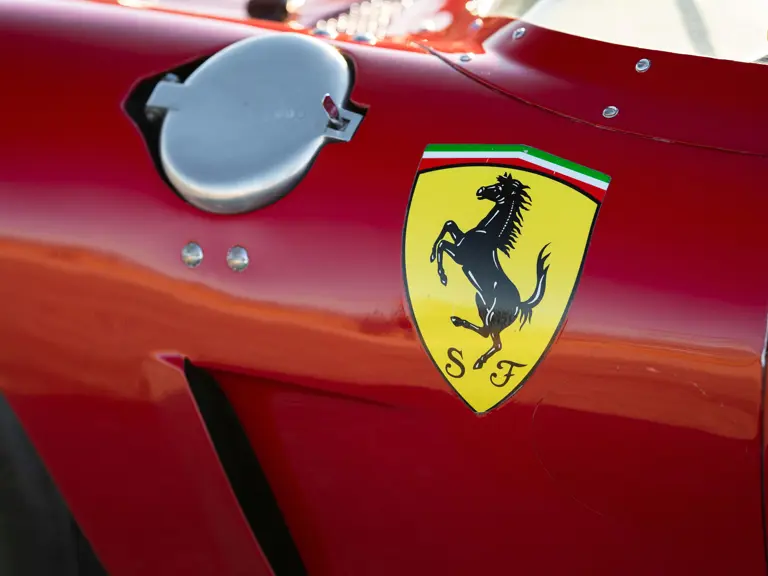

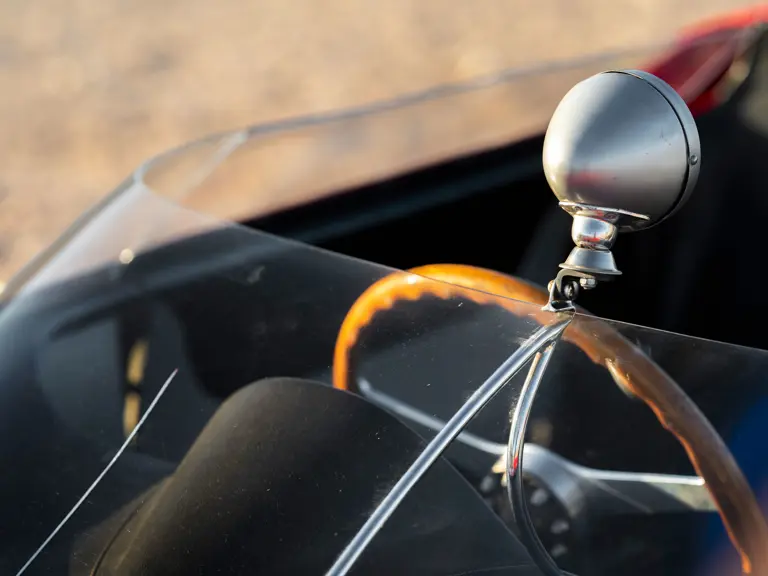

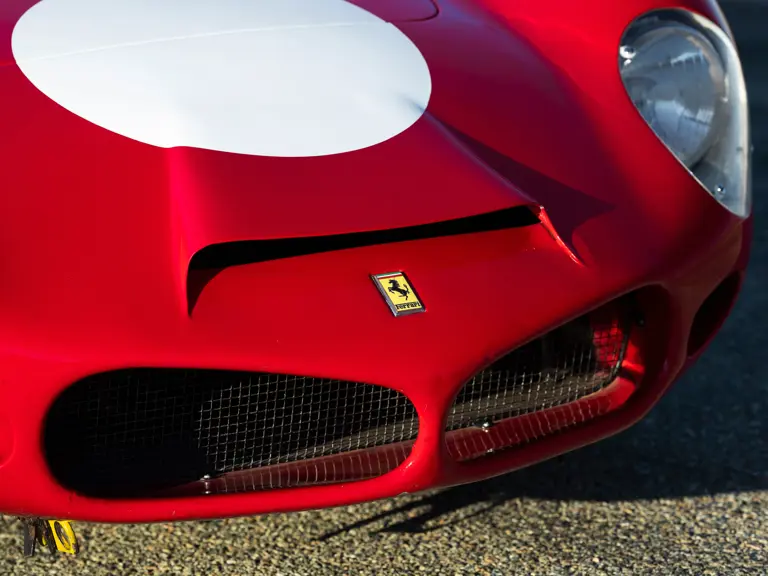
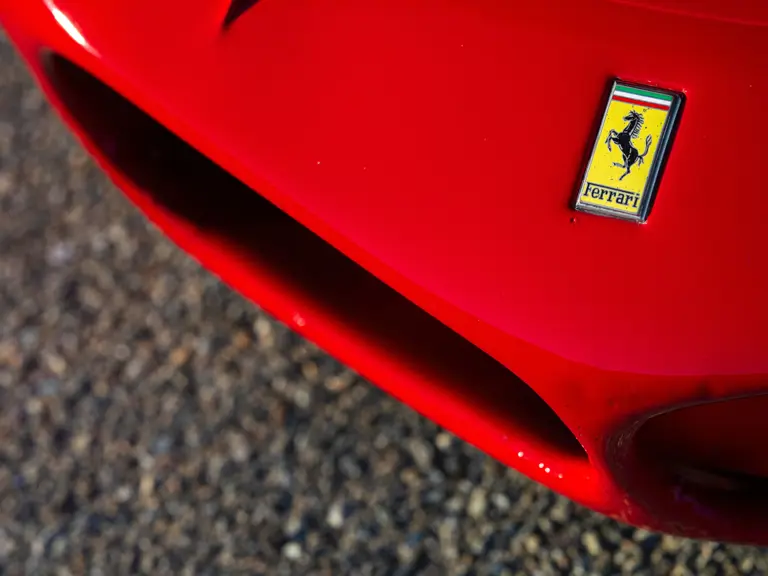
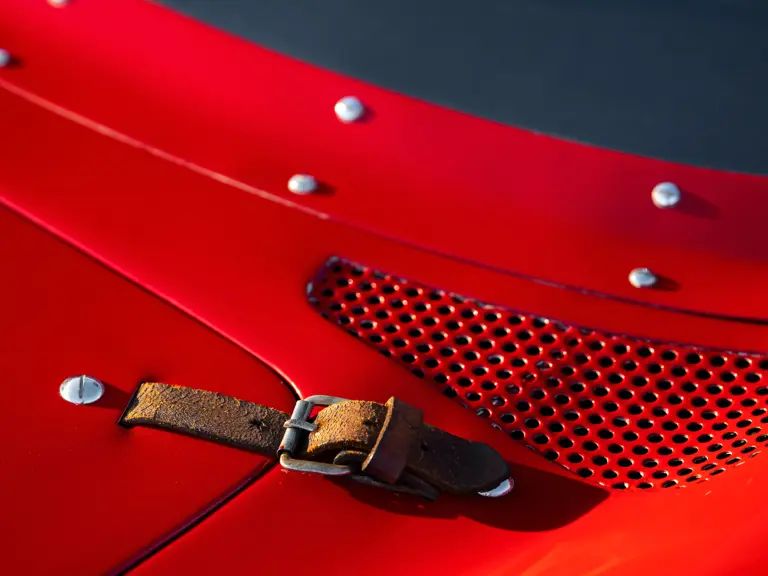
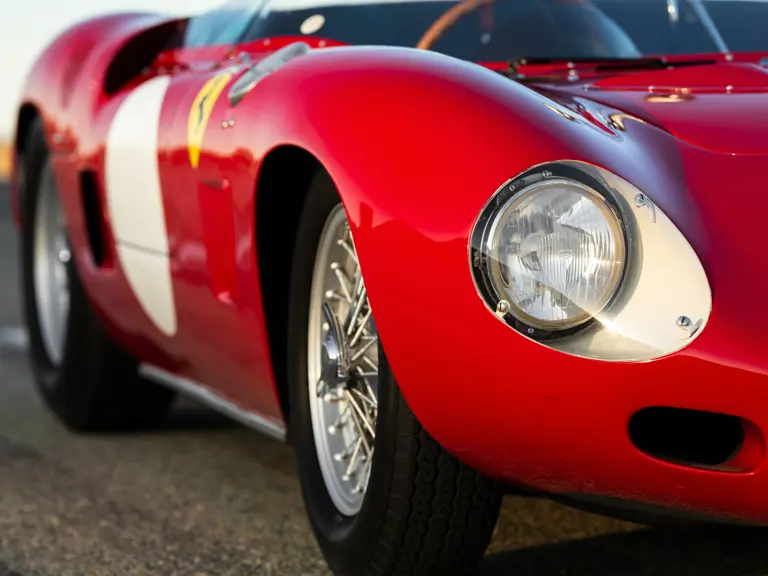
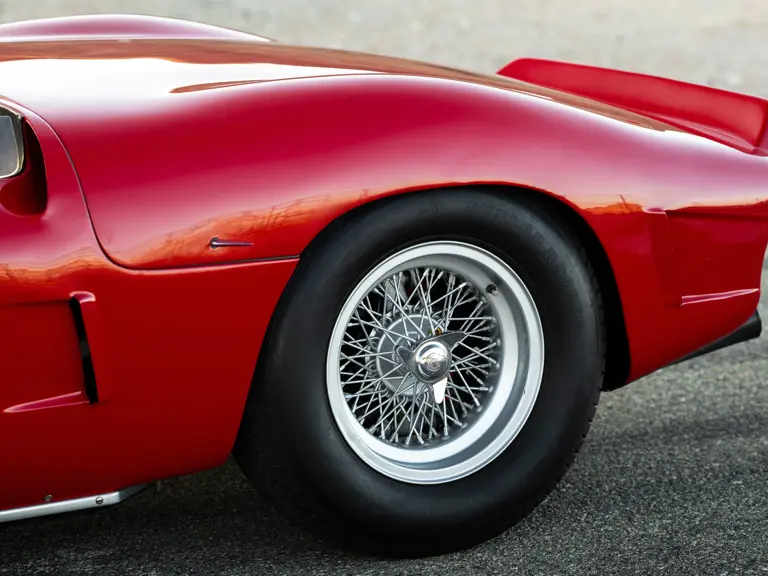

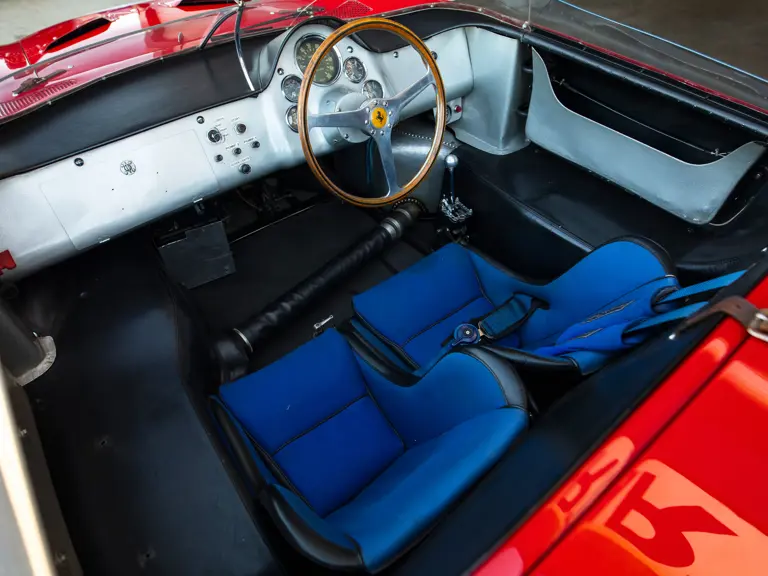
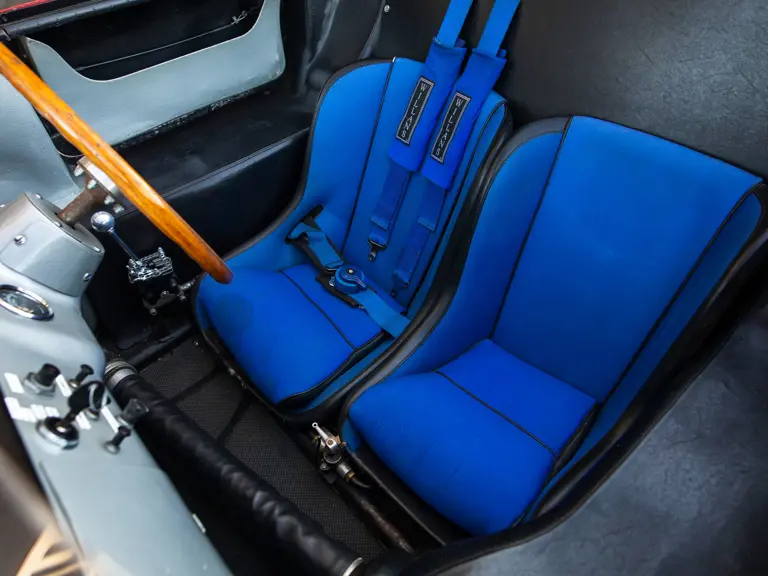
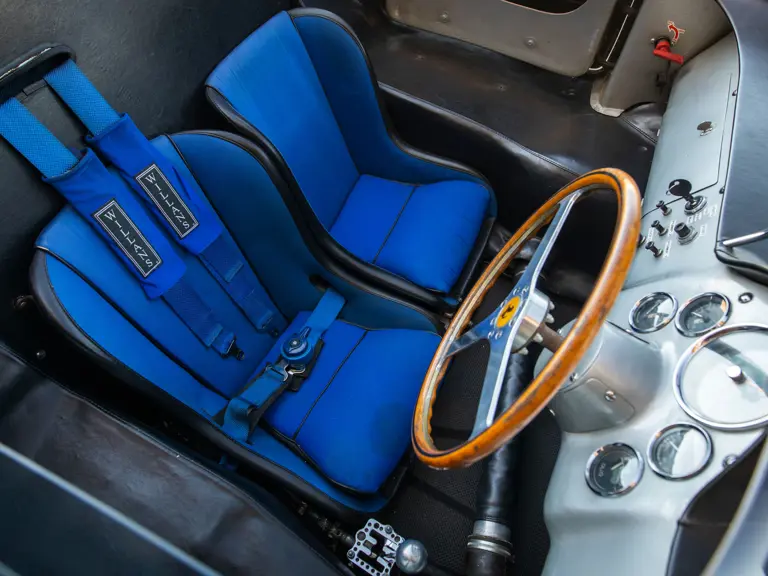
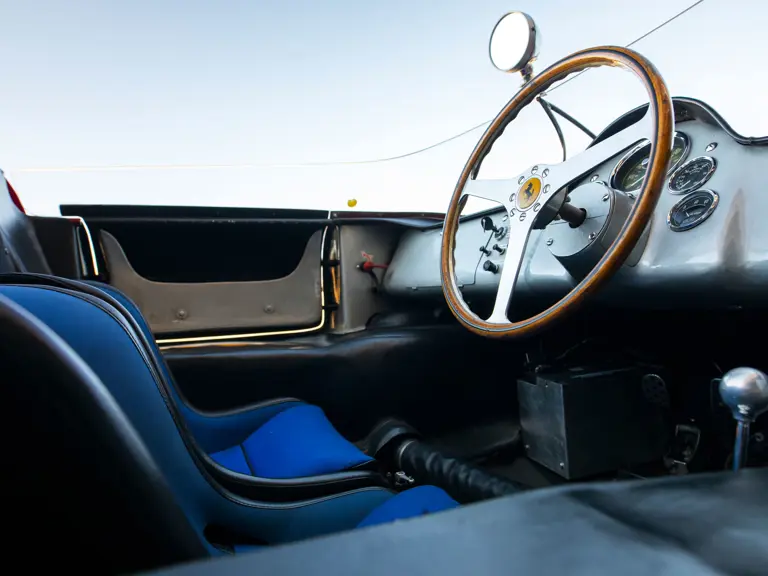

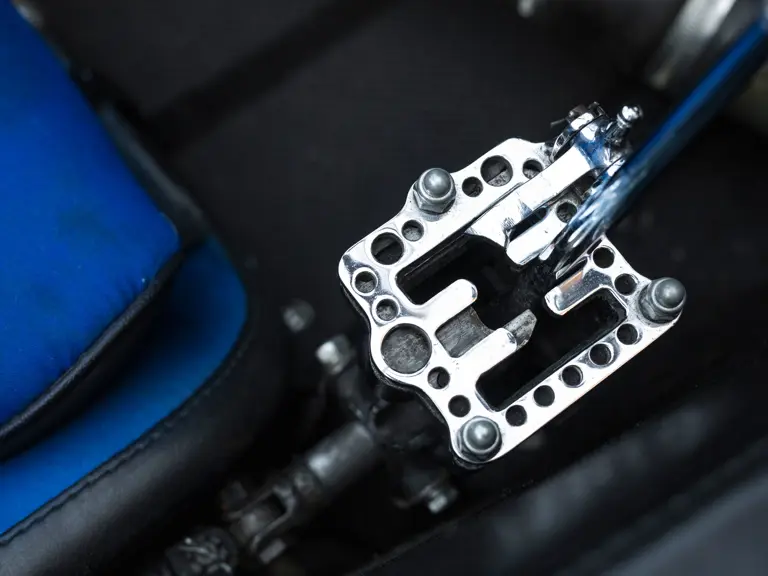
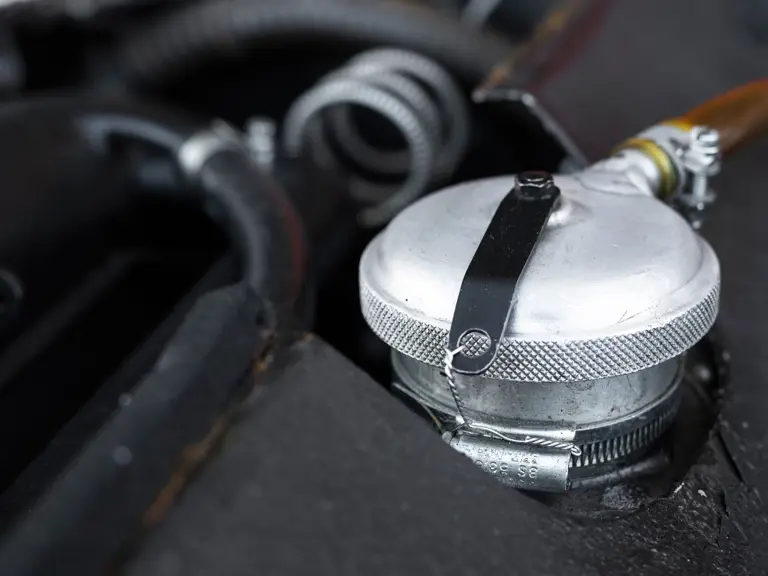

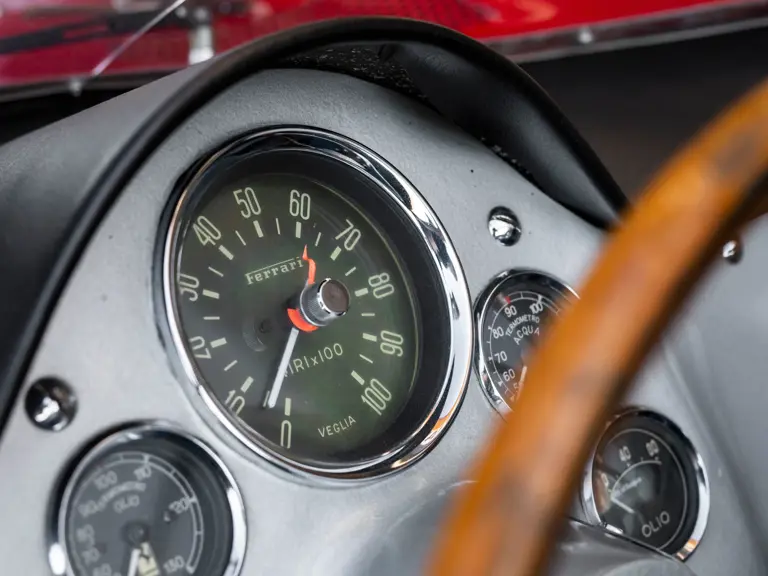
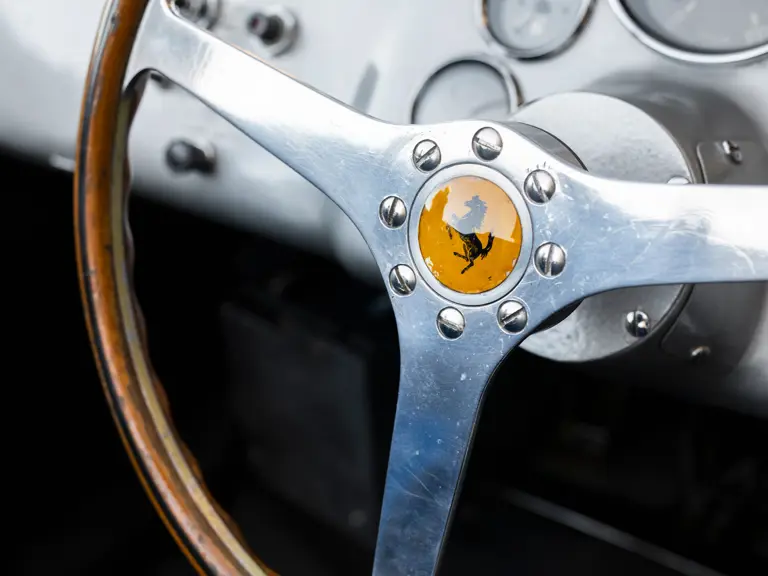
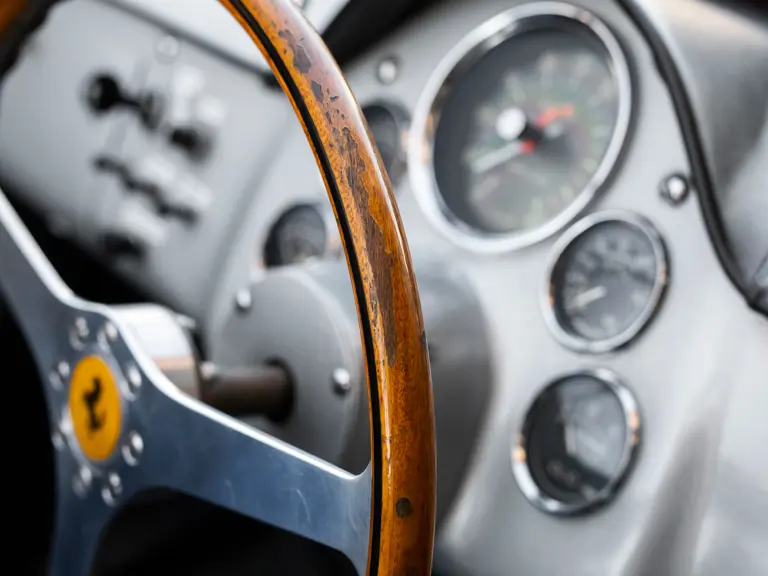
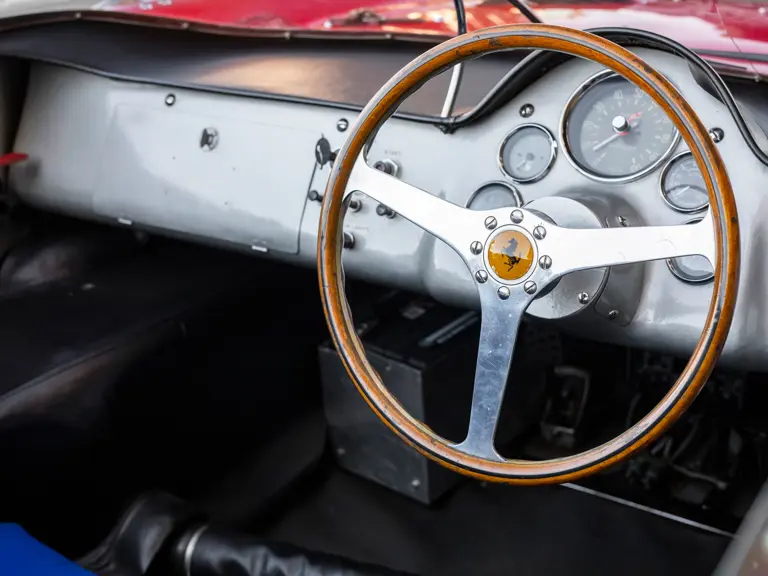
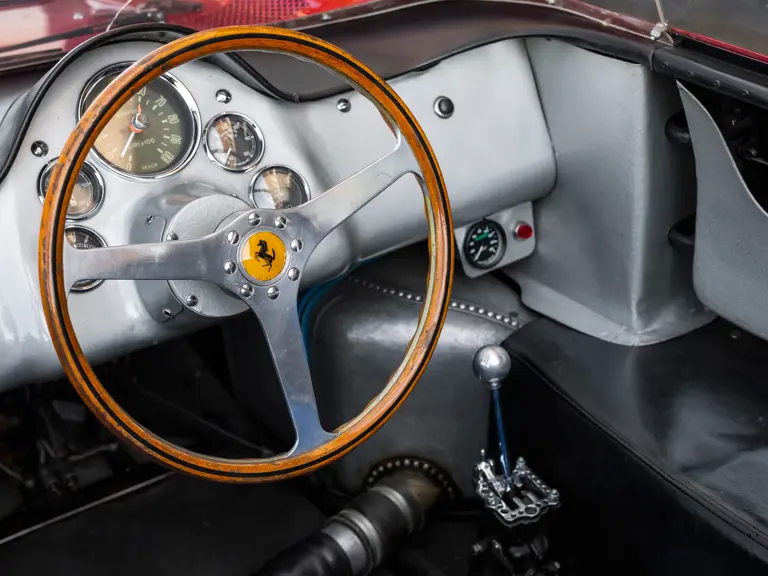
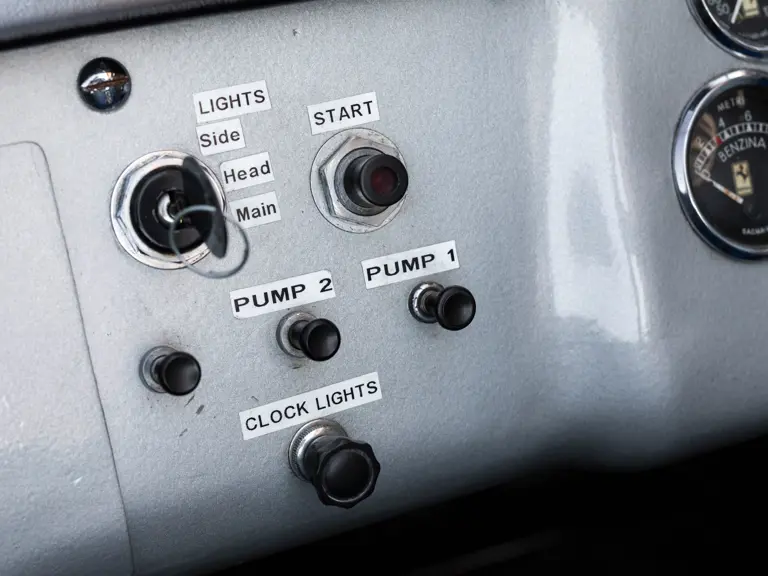

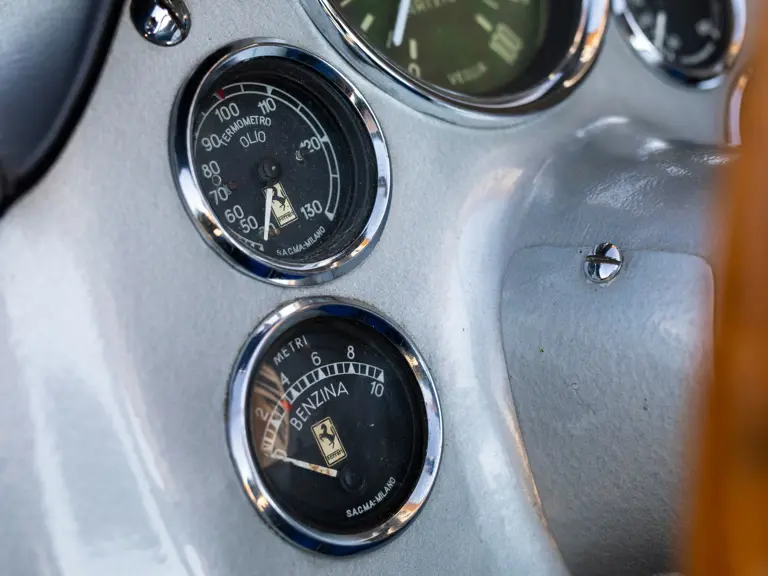
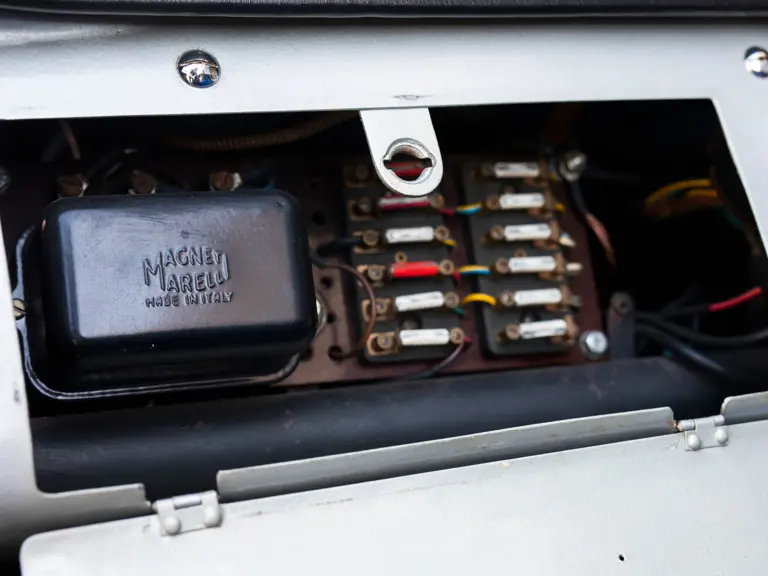
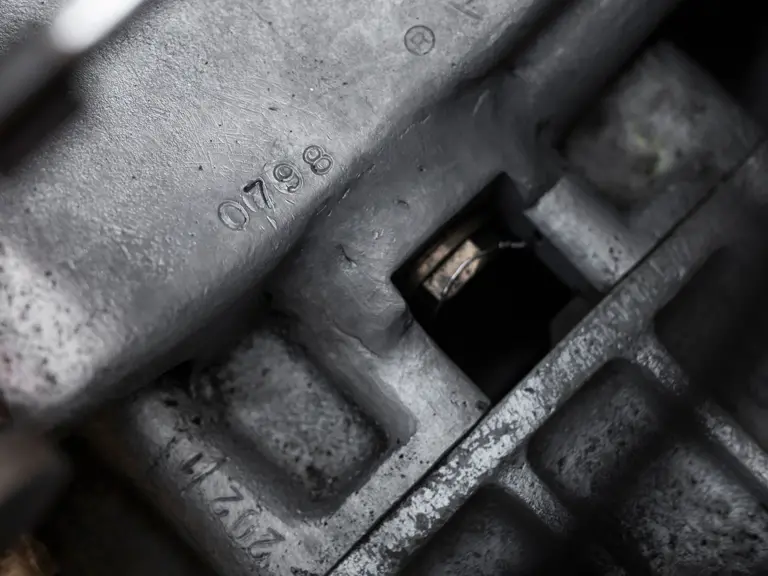

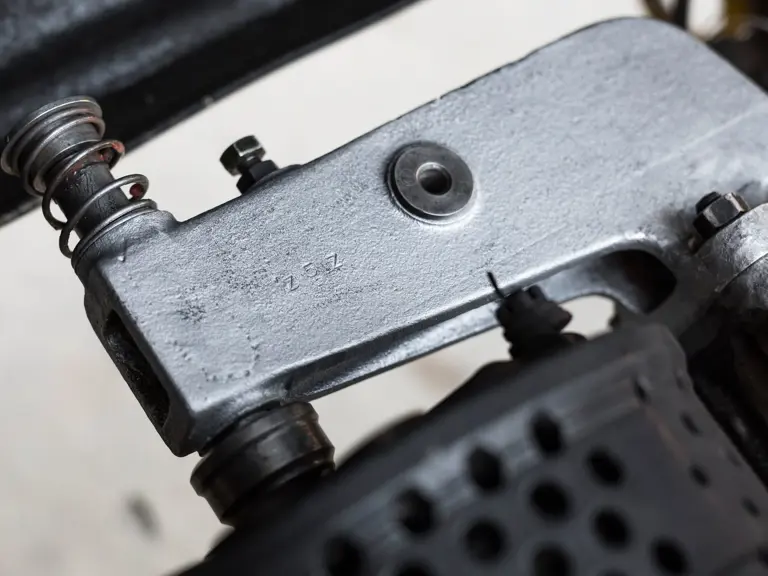
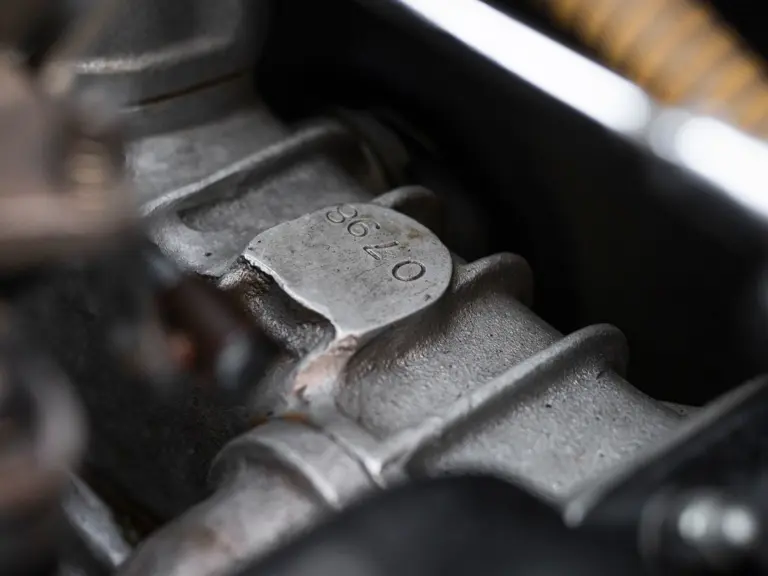
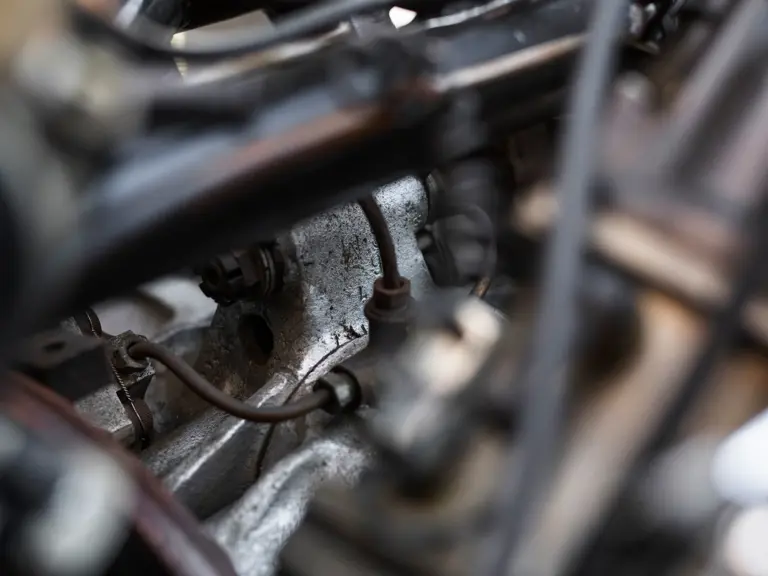

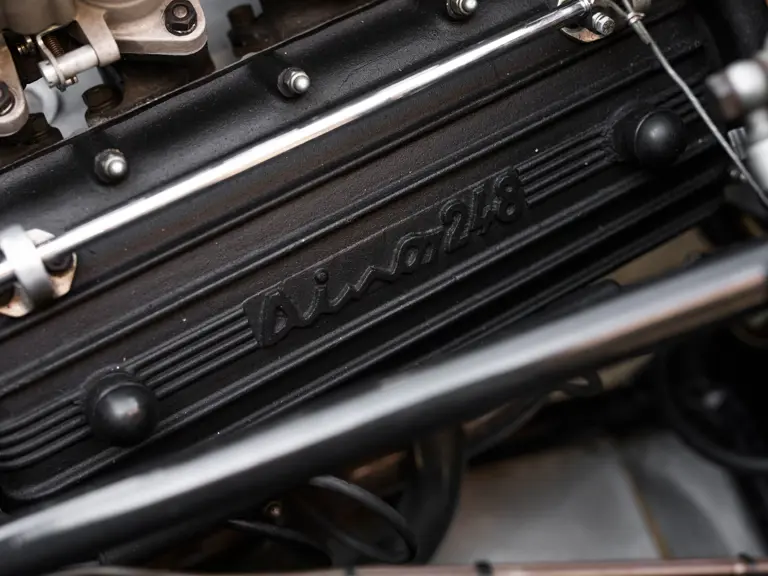
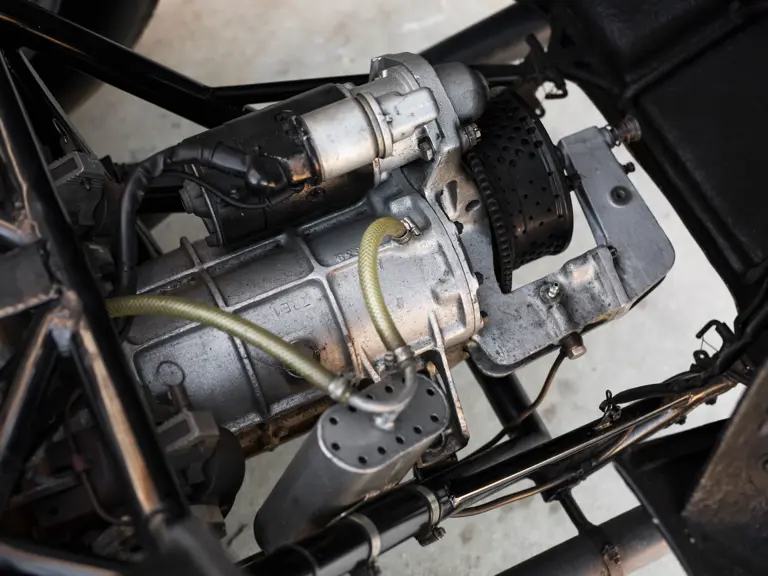
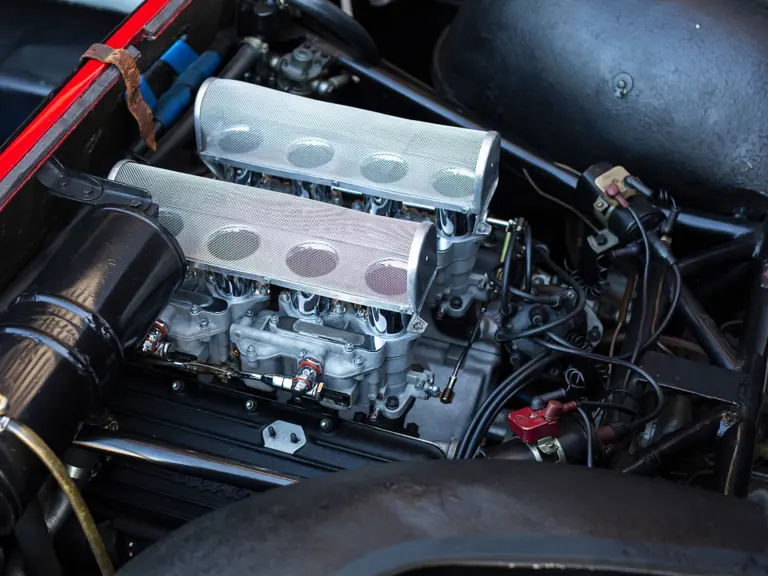
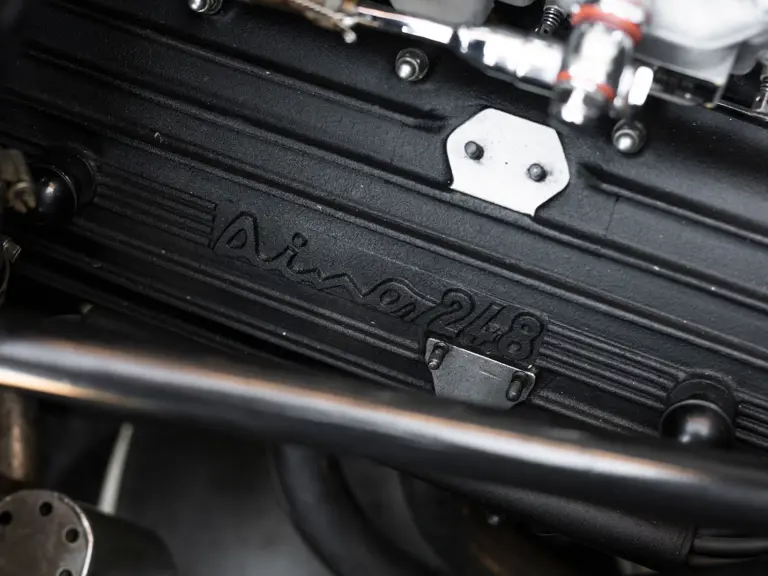
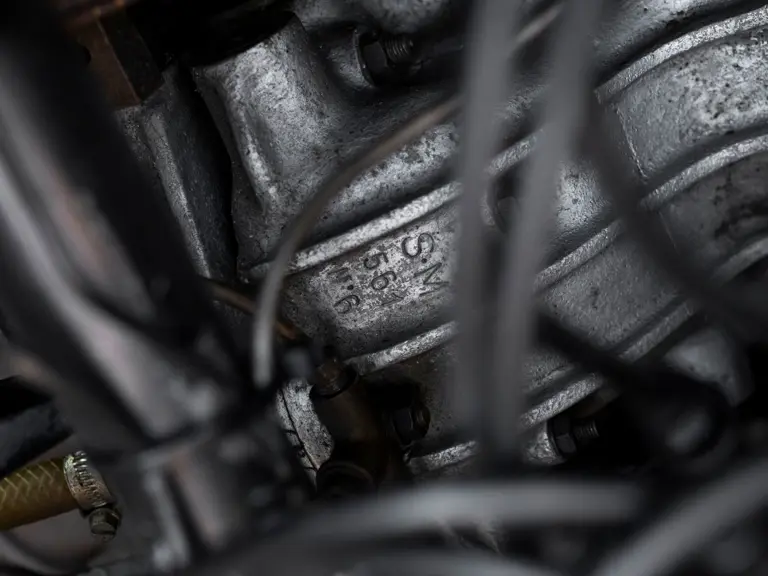
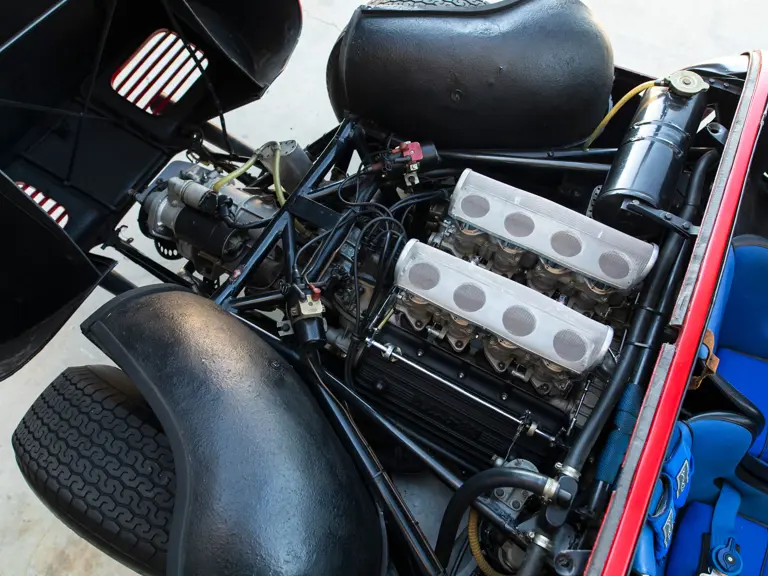
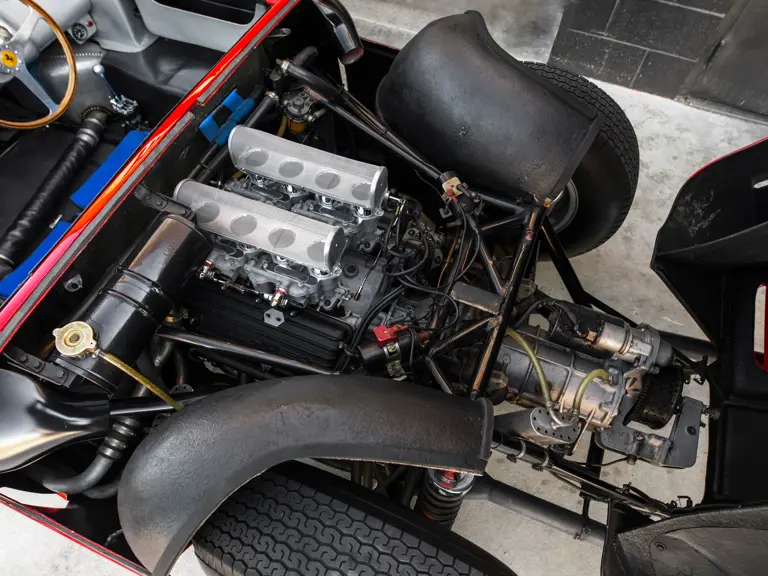
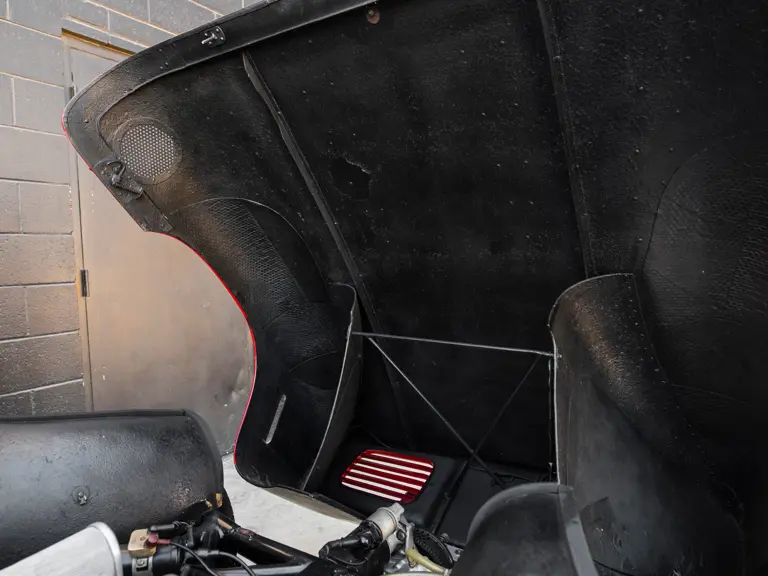
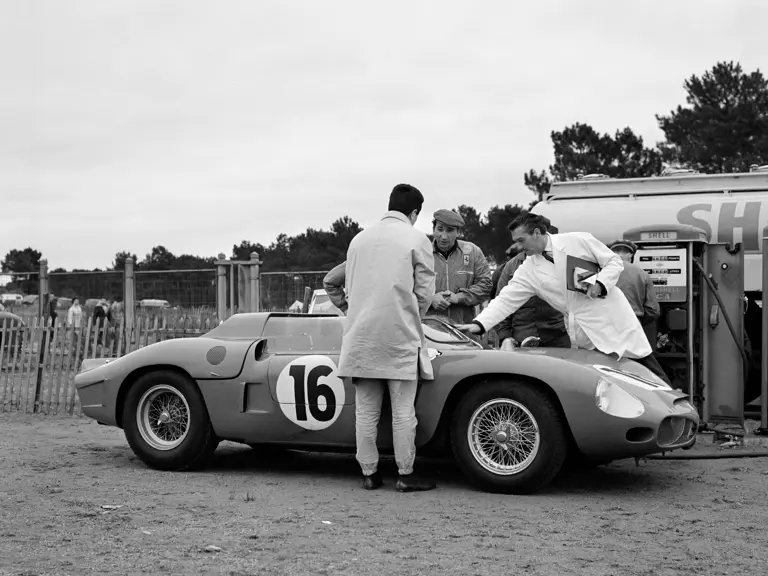
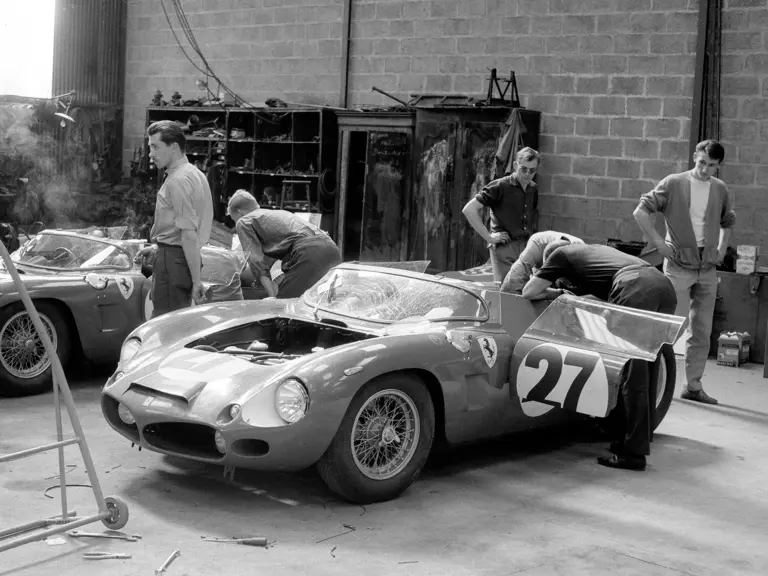
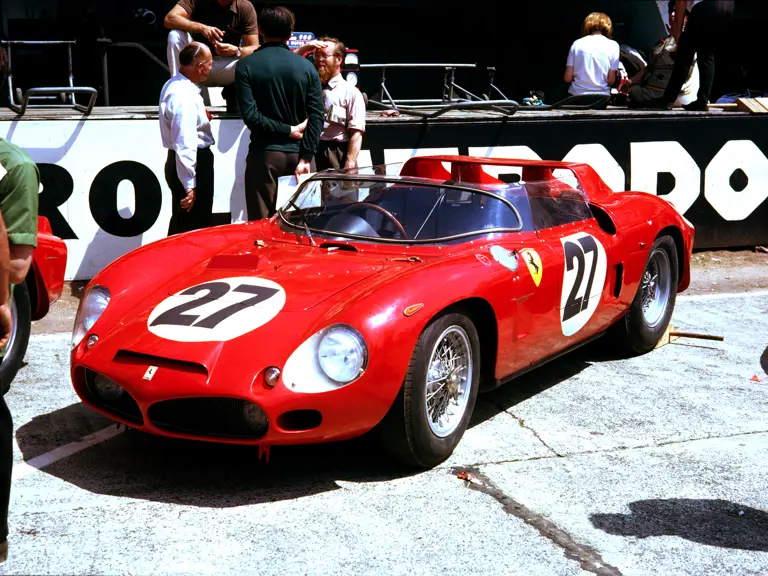
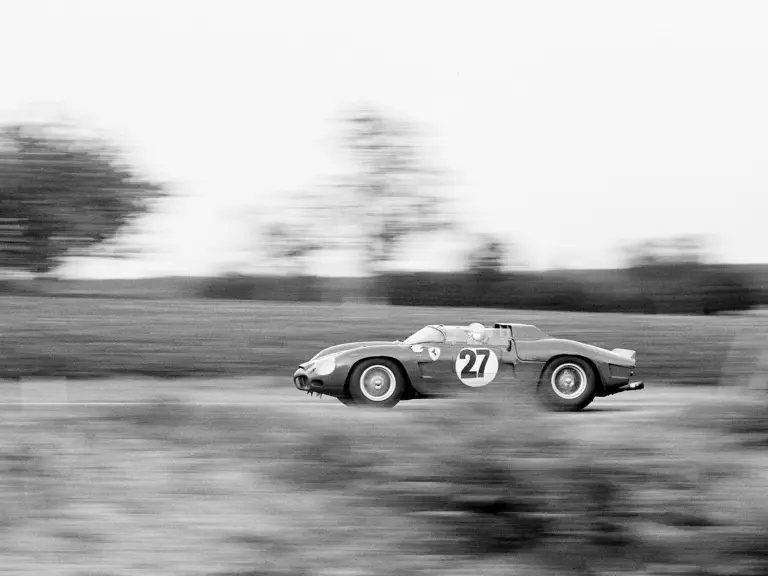
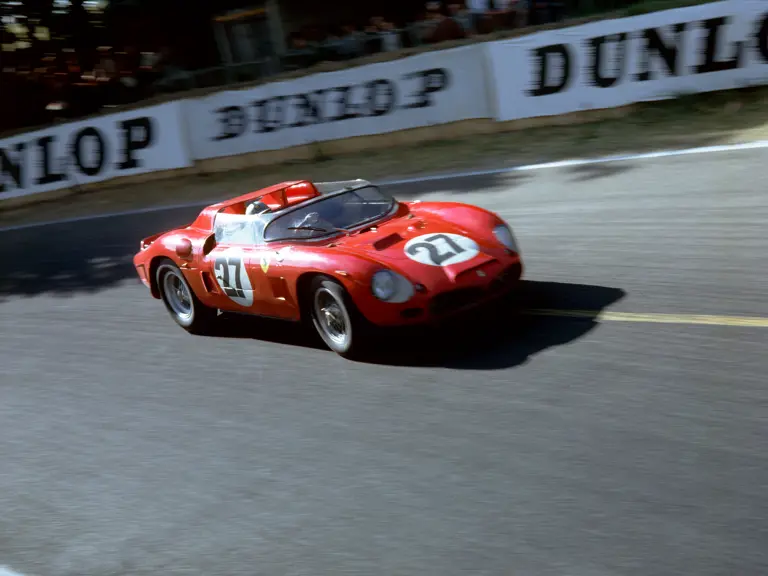
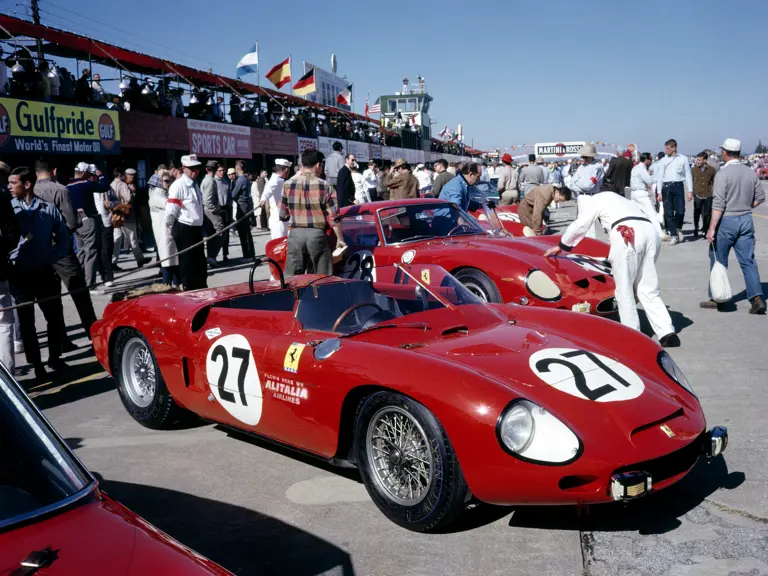
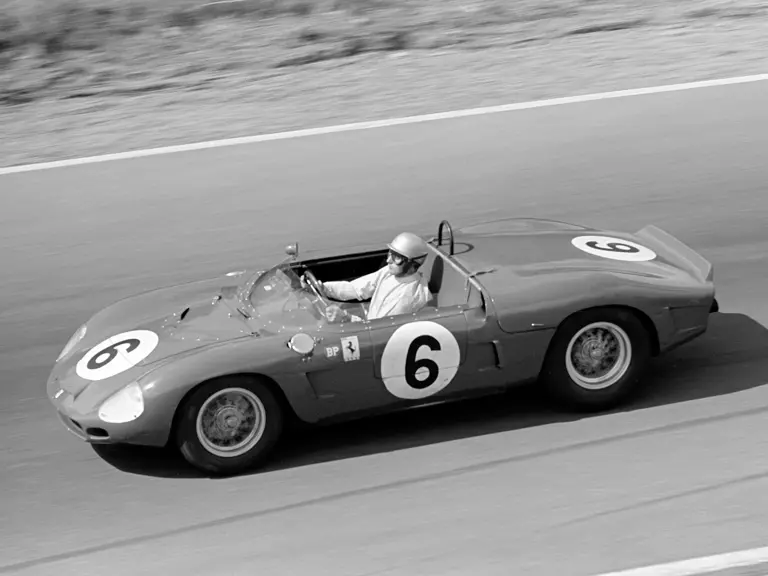


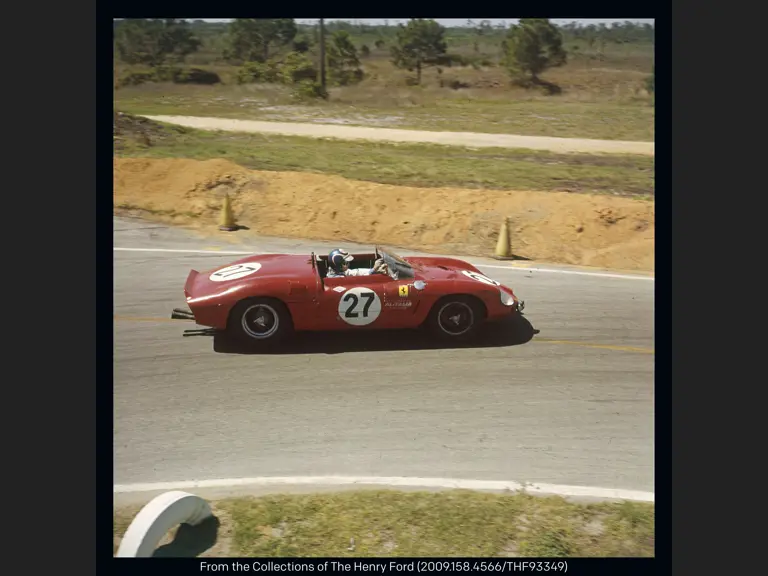
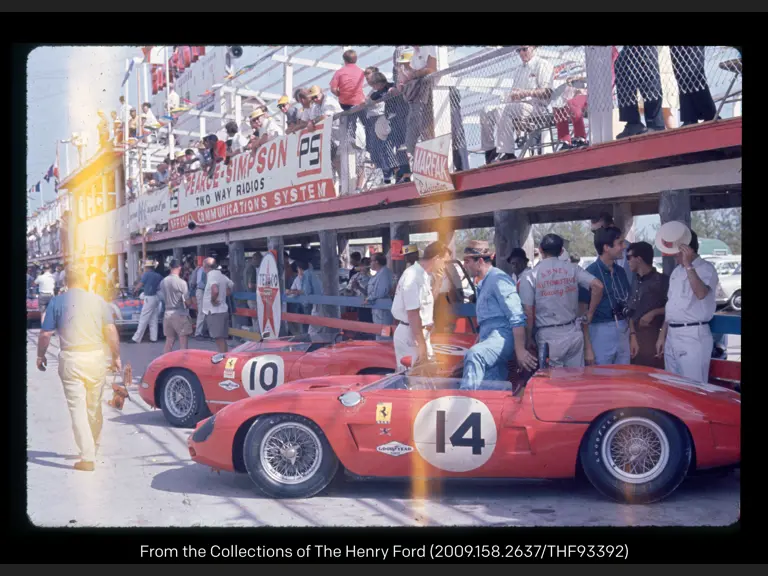
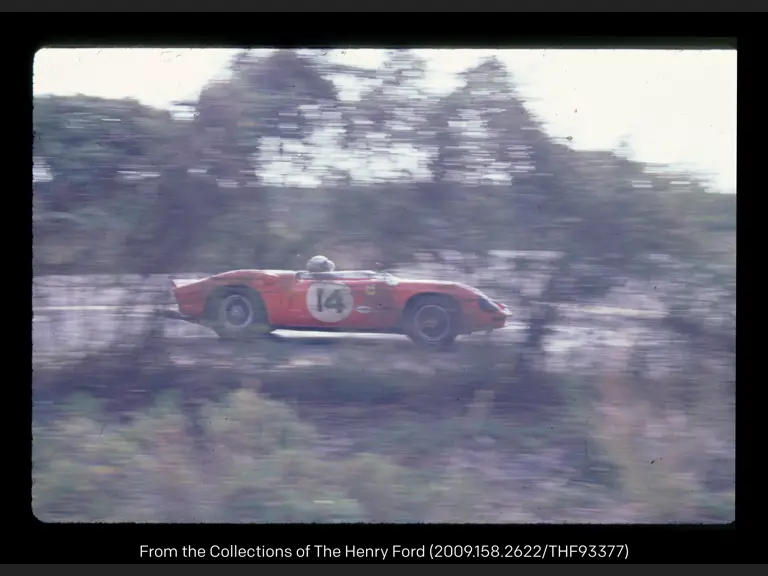
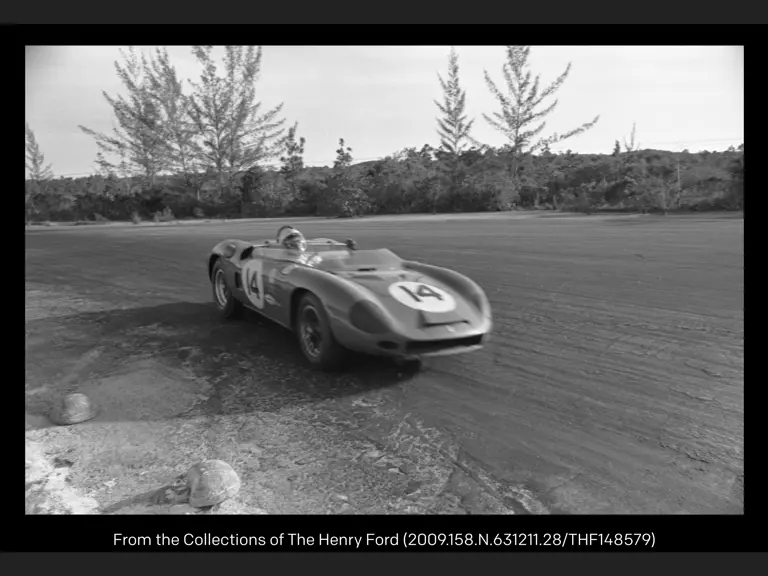
 | Monterey, California
| Monterey, California

